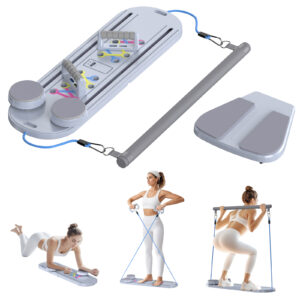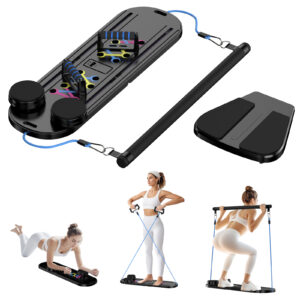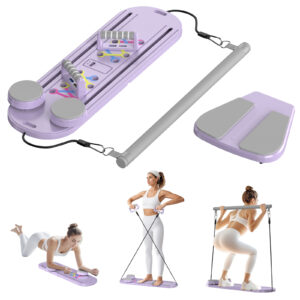Yoga is much more than a physical practice. It’s a journey toward achieving harmony between the body and mind. Whether you’re new to yoga or seeking to deepen your practice, understanding its foundational principles, poses, and techniques can greatly enhance your experience. In this comprehensive guide, we will explore the key elements of yoga, from basic poses to advanced practices, and breathing techniques, and how to incorporate yoga into your daily routine. Let’s embark on this journey of physical flexibility and mental clarity.
The Fundamentals of Yoga
Yoga is an ancient discipline that originated in India over 5,000 years ago. It blends physical postures (asanas), breathing techniques (pranayama), and meditation (dhyana) to improve overall health and well-being.
Over time, yoga has evolved into various styles, each with unique methods and benefits:
- Hatha Yoga: Focuses on physical postures and controlled breathing.
- Vinyasa Yoga: A dynamic style that links breath with movement in flowing sequences.
- Ashtanga Yoga: A rigorous, fast-paced style emphasizing eight limbs of yoga and synchronization of breath with movement.
- Yin Yoga: Involves long-held postures to increase flexibility and promote deep relaxation.
- Restorative Yoga: Gentle poses with the use of props, focusing on relaxation and stress reduction.
Preparing for Your Yoga Training
Before you step onto your yoga mat, it’s important to be prepared, both physically and mentally. The right equipment and environment can significantly enhance your practice.
Choosing the Right Yoga Mat and Clothing
Your yoga mat should offer enough grip and comfort to support your practice. A high-quality mat prevents slipping and cushions your body during poses. As for clothing, choose breathable, stretchy fabrics that allow you to move freely without restriction.
Warm-Up and Mental Preparation Before Training
Start each session with a gentle warm-up to prepare your muscles and joints. Breathing exercises can also help you center your mind and cultivate focus for your practice. A calm, focused mindset is crucial for maximizing the benefits of each pose.
Selecting the Ideal Environment and Atmosphere
The atmosphere of your practice space matters. Choose a quiet, clean area with ample space to move. Dim lighting, soft music, or essential oils can help create a peaceful environment, allowing you to relax and focus on your breath and movements.
Understanding Yoga Poses (Asanas)
Yoga poses, or asanas, are designed to improve flexibility, strength, and balance. They can be categorized into different types based on their benefits and difficulty levels.
Basic Yoga Pose Categories
- Standing Poses: These poses improve strength and stability, such as the Warrior Pose and Tree Pose.
- Seated Poses: These are great for stretching and opening the hips, such as the Seated Forward Fold.
- Balance Poses: These poses challenge coordination and focus, like the Half Moon Pose or the Crow Pose.
- Stretching Poses: These poses enhance flexibility and muscle lengthening, such as Downward Dog and Cobra Pose.
The Benefits and Techniques of Each Pose
Each pose in yoga has a specific purpose. For example, Warrior I builds strength in the legs and core while opening the chest, whereas Downward Dog targets the hamstrings and spine, promoting flexibility. Always focus on proper alignment and listen to your body to avoid injury.
Breathing Techniques in Yoga
Breathing is an essential part of yoga practice. Controlled breathing helps to calm the mind, increase energy, and improve physical performance in each pose.
Practicing Different Types of Breathing
- Diaphragmatic Breathing: This deep belly breathing encourages relaxation and improves lung capacity.
- Chest Breathing: This type of breathing can be helpful in dynamic practices like Vinyasa or Ashtanga yoga.
- Alternate Nostril Breathing: A pranayama technique that promotes mental clarity and balance by inhaling through one nostril and exhaling through the other.
How to Coordinate Breath with Movement
In yoga, every movement is paired with a specific breath. Inhale as you expand or lengthen, and exhale as you fold or contract. By coordinating your breath with movement, you can create a smooth, meditative flow.
Common Issues and Solutions in Yoga Training
Yoga is an individual journey, and each person may face different challenges. Below are common issues beginners encounter and ways to overcome them:
Common Mistakes During Practice
- Incorrect posture alignment: This can lead to unnecessary strain. Always check your body alignment in each pose.
- Holding the breath: Make sure your breath flows smoothly with each movement.
- Overstretching: Avoid pushing your body too far. It’s important to respect your limits and gradually increase flexibility.
Injury Prevention and Recovery Tips
Start with simpler poses and progress gradually. Use props like blocks or straps for added support, and listen to your body’s signals to avoid overexertion. If you experience any pain, stop immediately and consult a healthcare professional if necessary.
Advanced Yoga Techniques
As you progress in yoga, you may want to explore advanced techniques that challenge your body and mind. Here’s how you can take your practice to the next level:
Transitioning from Beginner to Advanced Levels
Start with the basics and slowly introduce more complex poses as your flexibility and strength improve. Work on balancing between flexibility and strength, and seek guidance from experienced instructors when needed.
Enhancing Flexibility and Strength
Incorporate more advanced poses that require balance, such as Handstands and Scorpion Pose, as well as deeper stretches for flexibility. Strengthen your core and legs through poses like Plank and Chair poses to build stability.
Yoga Meditation and Mental Growth
Yoga is not just about physical poses; it also involves meditation and mindfulness. Practicing mindfulness during your sessions can enhance mental clarity, emotional resilience, and self-awareness.
Relaxation and Recovery After Yoga Practice
After an intense yoga session, it’s crucial to give your body time to relax and recover. Here are some relaxation techniques:
Common Relaxation Poses
- Savasana: This is a resting pose that helps your body absorb the benefits of your practice.
- Child’s Pose: A gentle resting pose that stretches the back and helps release tension.
Stretching and Cooling Down After Practice
End your session with gentle stretches to release any remaining tension. Focus on long, deep breaths during your cool-down to promote relaxation and reduce muscle stiffness.
The Long-Term Benefits of Yoga for Body and Mind
Regular yoga practice offers numerous long-term benefits:
- Improved Flexibility: Yoga enhances the elasticity of muscles and connective tissue, leading to improved joint health and mobility.
- Stronger Muscles: Consistent yoga strengthens core muscles, improves posture, and increases muscle endurance.
- Reduced Stress: Yoga helps regulate the stress response, leading to lower levels of cortisol and increased feelings of calm.
Integrating Yoga into Daily Life
To truly reap the benefits of yoga, it’s important to incorporate it into your daily routine:
Creating a Yoga Routine That Fits Your Lifestyle
Set aside time each day to practice yoga, even for only 15 minutes. Focus on consistency rather than duration to build a sustainable practice.
Finding Balance Between Yoga and Everyday Activities
Yoga should complement your lifestyle, not overwhelm it. Try to incorporate mindful movement, stretching, and breathing techniques throughout your day to stay centered and balanced.
Frequently Asked Questions About Yoga
- Do I need to be flexible to practice yoga? No! Yoga is about progress, not perfection. Flexibility improves over time.
- How often should I practice yoga? It depends on your goals, but practicing 3-4 times a week is a great starting point.
- Can yoga help with weight loss? Yoga can help reduce stress and improve metabolism, contributing to weight management.
Conclusion: Embark on Your Yoga Journey
Yoga is a lifelong journey that can transform both your body and mind. Start slow, practice consistently, and enjoy the process of self-discovery. Whether you’re looking to build strength, improve flexibility, or find mental clarity, yoga offers a path to achieve your goals. Begin your practice today and experience the profound benefits it brings.






